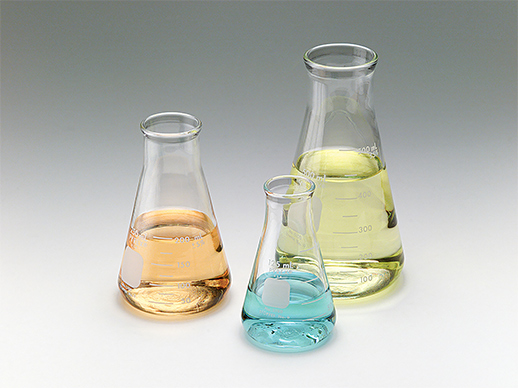| Composition: | Propylene oxide condensate |
| English name: | Poly propylene glycol |
| Type: | Non-ionic |
|
SPEC. |
Vist Insp (25°C) |
Color Pt-Co |
Hydroxyl value mgKOH/g |
Molecular Weight |
Acid Value Mgkoh/g |
Water wt (%) |
PH 1% in water |
|
PPG-200 |
Clear clear oily substance Thick liquid |
≤20 |
510-623 |
180-220 |
≤0.5 |
≤0.5 |
5.0~ 7.0 |
|
PPG-400 |
Clear clear oily substance Thick liquid |
≤20 |
255-312 |
360-440 |
≤0.5 |
≤0.5 |
5.0~ 7.0 |
|
PPG-600 |
Clear clear oily substance Thick liquid |
≤20 |
170〜208 |
540-660 |
≤0.5 |
≤0.5 |
5.0~ 7.0 |
|
PPG-1000 |
Clear clear oily substance Thick liquid |
≤20 |
102-125 |
900-1100 |
≤0.5 |
≤0.5 |
5.0~ 7.0 |
|
PPG-1500 |
Clear clear oily substance Thick liquid |
≤20 |
68 〜83 |
1350-1650 |
≤0.5 |
≤0.5 |
5.0~ 7.0 |
|
PPG-2000 |
Clear clear oily substance Thick liquid |
≤20 |
51-62 |
1800-2200 |
≤0.5 |
≤0.5 |
5.0~ 7.0 |
|
PPG-3000 |
Clear clear oily substance Thick liquid |
≤20 |
34-42 |
2700〜3300 |
≤0.5 |
≤0.5 |
5.0~ 7.0 |
1.PPG series are soluble in toluene, ethanol, trichlorethylene and other organic solvents. PPG200, 400, 600 are soluble in water and have lubricating, solubilizing, defoaming and antistatic properties. PPD- -200 can be used as a dispersant for pigments.
2. In cosmetics, PPG-400 is used as emollient, softener and lubricant.
3.Used as antifoaming agent in paint and hydraulic oil, antifoaming agent in synthetic rubber and latex processing, refrigerant and coolant for heat transfer fluid, viscosity improver.
4.Used as an intermediate in esterification, etherification reaction and polycondensation reactions.
5.Used as a release agent, solubilizer, additive for synthetic oils, additive for water-soluble cutting fluids, roller oils, hydraulic oils, high-temperature lubricants, internal and external lubricants for rubber.
200KG iron drum/plastic drum, 50KG plastic drum, IBC, flexitank, tank car.
This series of products is non-toxic, non-flammable, according to the general chemical storage.It is transported as non-toxic and non-dangerous goods, stored in a dry and ventilated place, storage period of two years.
PPG, also known as polypropylene glycol, mainly has 4 models—polypropylene glycol 200, polypropylene glycol 400, polypropylene glycol 600, and polypropylene glycol 1000.
Polypropylene glycol (PPG) exhibits varying properties and applications depending on its average molecular weight. PPG 200 belongs to the lower molecular weight category, characterised by high fluidity and low viscosity. Consequently, it demonstrates superior compatibility with water and numerous organic solvents, making it suitable for applications requiring excellent solubility and rapid diffusion. It is commonly employed as a solvent, humectant, or carrier.
As molecular weight increases, PPG 400 maintains good solubility while exhibiting rising viscosity, delivering more pronounced lubricating and moisturising effects. Consequently, it finds application in cosmetics, pharmaceutical formulations, and certain industrial lubricants. The higher-molecular-weight PPG 600 possesses greater viscosity, with enhanced lubricity and film-forming properties, making it suitable as a softener, plasticiser, or as component to enhance viscosity and stability within formulations.
As for PPG 1000, its longer molecular chains result in high viscosity and low volatility, delivering prolonged lubrication and moisturising effects. Within the chemical and personal care sectors, it frequently serves as a high-performance lubricant base, thickener, or as stabilising agent bridging hydrophilic and hydrophobic systems, offering both stability and safety.
